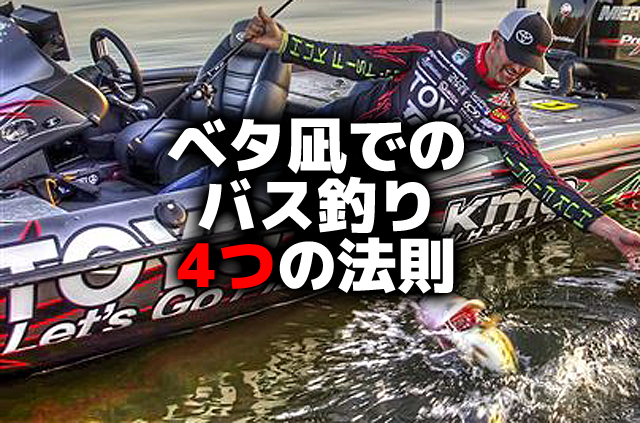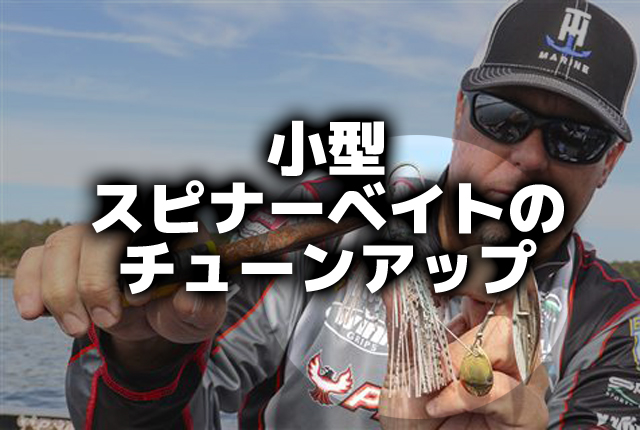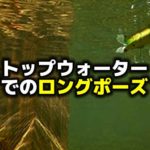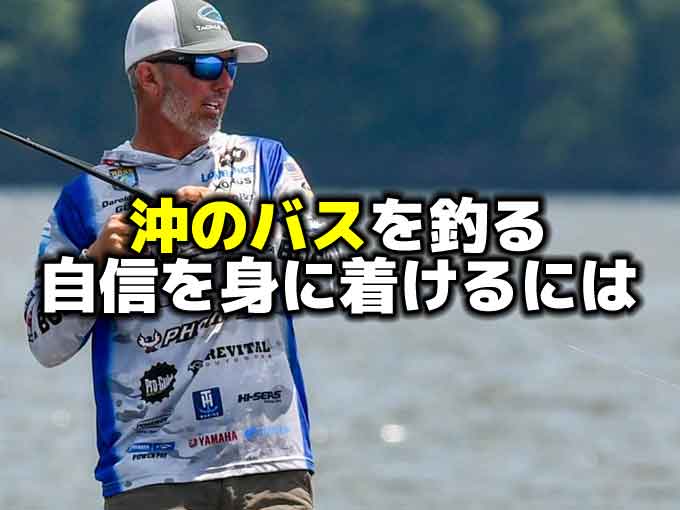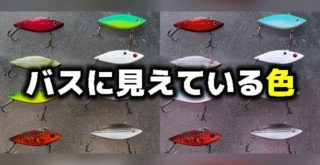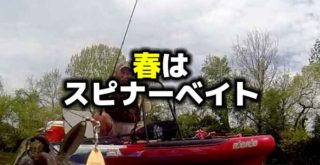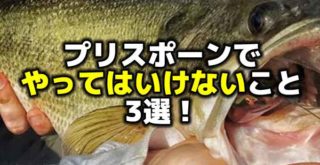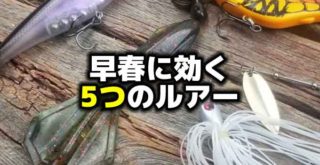クランクベイトを理解しよう
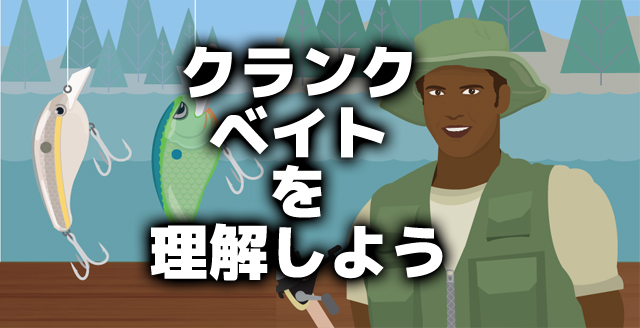
Picture by fix.com
こんにちは!店長の小山です!
本日は海外サイトより、”Get Cranking!How to Get the Most out of Your Crankbaits”という記事を引用してご紹介いたします。
クランクベイトは、アメリカではおそらく一番使われているバスルアーではないかと思います。
手返しが良くて広いエリアを素早くカバーすることができ、食性でのバイトも、リアクションでのバイトも両方得ることができて、年間を通して使うことができ、カバーにも結構強いというのがその理由だと思います。
使い方も簡単で、言ってしまえば投げて巻くだけのルアーです。
しかし、この「投げて巻くだけ」の中にもいろいろな要素が与える影響があって、それを理解して使うかどうかで、釣果にも差が出てくるようですね。
この記事は、アメリカのバスプロ、テイラー・ブリンクス氏がクランクベイトを使うに当たって、どのようなことを知っていたらいいのかに付いて詳しく解説しています。
ぜひ読んでみてください。
クランクベイトとは?
Any fish that routinely eats smaller fish can be targeted with crankbaits. A lure with a plastic lip that causes a bait to dive underwater can be classified as a crankbait. The depth ranges vary from just below the surface down to 20 feet or even deeper. To simplify things, crankbaits can be grouped into four major categories:
普段から小さな魚を食べている魚であればクランクベイトで狙うことができます。 リップによって水中へ潜っていくルアーは、クランクベイトとして分類することができます。 潜る深さの範囲は、水面のすぐ下から6メートル、そしてさらに深くまで及びます。 クランクベイトを4つのカテゴリに分類して単純化してみましょう。
スクエアビル&シャロークランク
The shallowest-diving crankbaits – including the popular squarebill crankbaits – work best around shallow cover. Ideal places to throw shallow crankbaits are around rocks, docks, submerged wood, and shallow grass lines. The key with shallow-diving crankbaits is to fish them with no regard to getting them hung up. While this may seem crazy for a lure that has two treble hooks attached, shallow-divers actually do not hang up often if you reel them in fast enough. When a lure deflects off a hard object, it is often the best time to catch a fish, as it causes a reaction from the fish as the lure changes direction. The body and lip of the crankbait will absorb the impact, causing the deflection, and the hooks will rarely penetrate the cover at high speeds.
スクエアビルクランクベイトを含むシャロークランクベイトは、シャローカバーの周りで最も効果的です。 シャロークランクベイトを投げる理想的な場所は、岩、桟橋、水中の木、シャローウィードエッジの周りです。 シャロークランクベイトの鍵は、根掛かりを恐れずに釣りをすることです。 2つのトレブルフックが付いているルアーなのにクレイジーと思われるかもしれませんが、シャロークランクは実際のところ速くリーリングすると意外と根掛かりしません。 ルアーが硬い物体へ当たった時、その時が魚を釣るチャンスで、ルアーが方向を変えるときに魚からのリアクションを引き起こすのです。 クランクベイトのボディとリップは、衝撃を吸収して軌道がそれるため、高速で巻いていればフックがカバーに引っ掛かることはほとんどありません。
ミディアムクランク
Medium-diving crankbaits work well in water that is shallower than 10 feet, even when they dive deeper than the water’s depth. A crankbait that dives 10 feet, for example, will be excellent in shallower water, as it will dig into the bottom and cause a disturbance. Like shallow-diving crankbaits, a deflection also triggers strikes, and a short pause after a deflection often results in a strike.
ミディアムクランクベイトは、水深3メートルよりも深いところでも、3メートルより浅いところでもうまく働きます。 例えば、3メートル潜るクランクベイトは、ボトムを叩きながらかき乱していくため、それより浅い水深でも使えます。 シャロークランクベイトのように、何かに当たった時にリアクションバイトを誘発し、その後の短いポーズでもバイトをもたらします。
ディープクランク
A deep crankbait works well for fishing off shore structures like rock piles, creek channels, and ledges. It takes more effort to get these crankbaits down deep and to make them stay there. Like the shallower styles, bottom contact is important, and any deflection or change in the retrieve will trigger a bite.
ディープクランクベイトは、ロックパイル(石積み)、クリークチャンネル、棚(段差)のような沖の地形変化を釣るのに適しています。 このクランクベイトをディープにとどめ続けるには、より多くの努力が必要です。 シャロークランクのように、ボトムとの接触が重要であり、何かに当たった瞬間やリトリーブの変化がバイトを引き起こします。
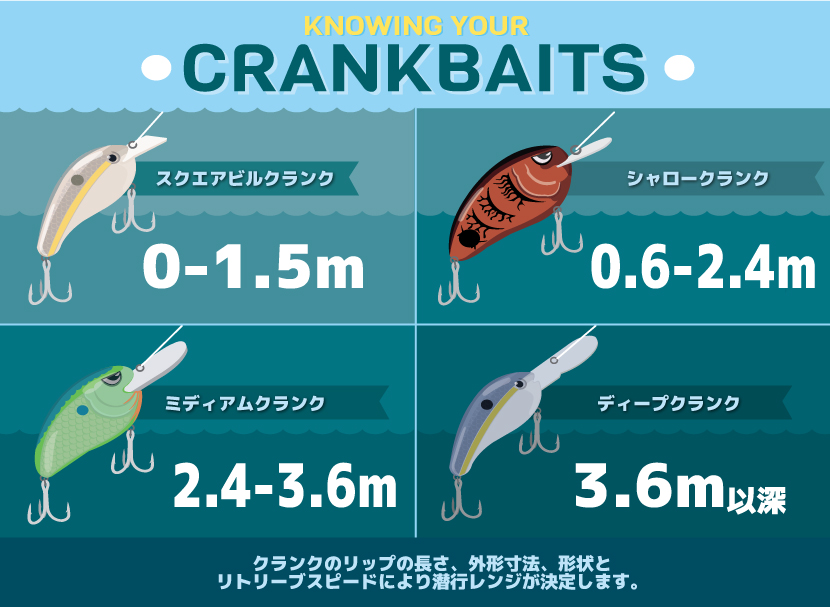
Picture by fix.com
春
In most cases, the warmer the water is, the faster you want to crank your reel handle. A steady stop-and-go retrieve will also work in all seasons. Shallow crankbaits are perfect for springtime, as many of the largest fish in the lake will begin to enter shallow water in preparation for spawning. A red crankbait used with a fast retrieve will dive into the bottom and will look like a scurrying crawfish.
ほとんどの場合、水が暖かいときほどリールハンドルを早く巻くことです。 一定の「ストップアンドゴー」リトリーブも、すべての季節で機能します。 シャロークランクベイトは、湖にいる多くのビッグフィッシュが産卵の準備としてシャローに入ってくるので、春には完璧な選択肢です。 赤い色のクランクを高速リトリーブで使用すれば、底に潜り込もうと慌てているザリガニのように見えます。
夏
As the water temperature heats up, so does the metabolism of predatory fish. This is a time of year when you can crank as fast as you want to and fish deeper than you would in other seasons. A deep-diving crankbait is the top choice when fishing off shore structures.
水温が上昇するにつれて、魚食魚の代謝も増加します。 これは、他の季節よりももっと速く巻き、ディープを釣ることができる時です。 ディープダイビングのクランクベイトは、沖のストラクチャーを攻略する際の第一の選択肢です。
秋
Fall is arguably the best season to use crankbaits. This is when the baitfish become most active and the predatory fish begin to chase them. In lakes that have shad, a white or shad-pattern crankbait with a fast retrieve is the best lure to use to cover water until you locate a concentration of fish.
おそらく、秋はクランクベイトを使うのに最高のシーズンです。 ベイトフィッシュが最も活発になり、捕食魚がそれらを追いかけ始める時だからです。 シャッド(ベイトフィッシュ)のいる湖では、白やシャッド模様のクランクベイトを早巻きで使い、魚の群れを見つけるまでのサーチベイトに最適です。
冬
Winter is time to use a flat-sided crankbait that produces a tight wobbling action. A crankbait with a wider wobble does not work as well in colder temperatures, so flat-sided crankbaits are the top choice when fished with a slow and steady retrieve.
冬はタイトなウォブリングアクションをするフラットサイドクランクベイトを使用します。ワイドウォブリングのクランクベイトは低水温下では機能しませんので、ゆっくりとしたステディリトリーブで釣るフラットサイドクランクベイトが一番の選択です。
使用するラインのタイプや太さ
Selecting fishing line is one of the most overlooked aspects of crankbait fishing. Line size and diameter greatly affect how deep your baits will dive and what action they will have. Simply put, the thinner the diameter is, the deeper a bait will dive.
In addition to the line diameter, the type of line will affect the diving depths of your crankbaits. Monofilament and braid will float, and fluorocarbon will sink. Braided line will also have the least stretch, making it the least attractive option for crankbait fishing. The lack of stretch will tend to pull hooks out of the mouth of a fish, resulting in more lost fish.
Monofilament and fluorocarbon are the top choices for crankbaits. Monofilament is ideal for shallow crankbaits, especially when you are fishing around grass, as it will not hang up as often as the sinking fluorocarbon.
Fluorocarbon is a great all-around line for crankbait fishing; it has minimal stretch, and the sinking properties will allow a crankbait to dive deeper.
ライン選びは、クランクベイトを使う中で最も見過ごされている側面の1つです。 ラインの強さや直径は、ルアーがどのくらい深く潜り、どのようなアクションをするかに大きく影響します。 簡単に言えば、直径が細いほど深くまでルアーが潜ります。
ライン径に加えて、ラインのタイプもクランクベイトの潜水深度に影響します。 ナイロンとPEは浮き、フロロカーボンは沈む。 PEラインはまた、ライン自体の伸びが全くなく、クランクでの釣りとしては最も魅力的ではない特徴です。 伸びがないということは、魚の口からフックを引っ張りすぎる傾向があり、結果として魚をバラすことになります。
ナイロンとフロロカーボンは、クランクベイトの釣りのトップの選択肢です。 ナイロンは、シャロークランクベイトには理想的です。特にウィードの周りを釣っているときは、沈む特徴のあるフロロカーボンよりも根掛かりしません。
フロロカーボンはクランクベイトの釣りのための万能ラインです。最小限の伸びがあり、沈むという特性はクランクベイトがより深く潜ることを可能にします。
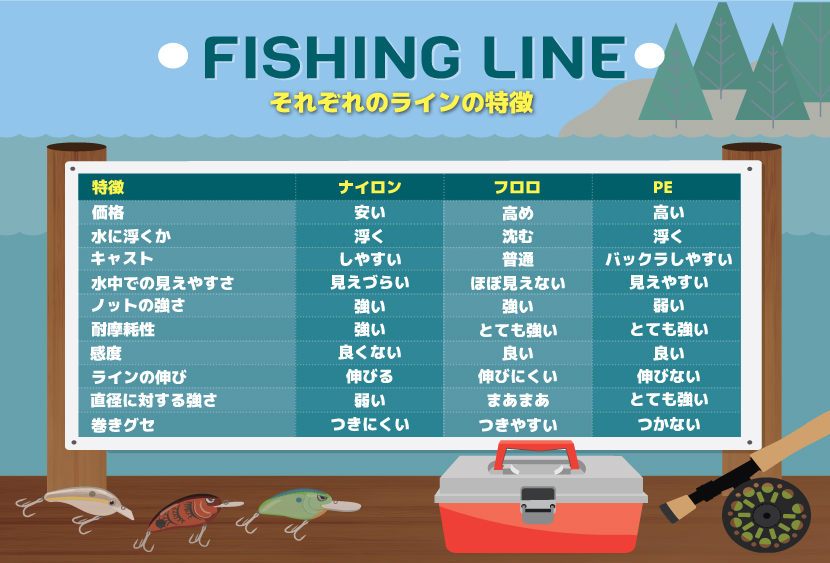
Picture by fix.com
クランクのタックル
Crankbaits need rods and reels specifically designed for the technique to get the most out of your lures.
A reel should be able to handle a large amount of line to get a better casting distance, and it should also have a slower gear ratio. A 5.4:1 or similar gear ratio works well for all crankbaits because of two major factors: it forces anglers to fish the baits slower, and it allows for more power during the retrieve.
Crankbait rods should be long to allow for increased casting distance and to get to the maximum diving depth. A rod that is longer than seven feet is ideal, and up to eight feet is not too long.
The rod action is another key factor, as having a rod with some give is best to allow the bait to dive deep without being held back or impeded by the rod. A good medium-heavy rod with a moderate action has a perfect balance of backbone and flexibility. Fiberglass composite rods are popular, as they provide the balance needed for casting and cranking.
クランクベイトには、ルアーとテクニックを最大限に活用するために専用に設計されたロッドとリールが必要です。
リールは、より長いキャスティング距離を得るために大量のラインを巻くことができ、また、より遅いギア比であるべきである。 5.4:1くらいのギア比は、2つの主な要因によりクランクベイト向きと言えます。釣り人にはルアーをより遅いスピードで釣らせることができ、リトリーブ中は多くのパワーをもたらします。
クランクベイト用ロッドは、キャスティング距離を長くし、最大の潜水深度に達するように長くする必要があります。 7フィートよりも長いロッドが理想的であり、8フィートまでは長すぎとは言えません。
ロッドのアクションは、また別の重要な要素です。ロッドによっては、ルアーの動きを邪魔したり、ロッドによって妨げられることなく、深く潜ることにもなります。 適度なアクションであるミディアムヘビーロッドは、剛性と柔軟性のバランスが完璧です。 グラスコンポジットロッドは、キャストおよびクランキングに必要なバランスを提供するので、人気があります。
フックの交換
The practice of swapping treble hooks is important as hooks become dull, but changing a hook style or size can have a big impact on a crankbait’s action and dive. Each treble hook style will vary in thickness and weight, causing a lure to dive shallower or deeper. The drastic change could also negatively affect how the crankbait was designed to run, giving it little or no action. With that in mind, it is best to change out hooks for similar sizes, styles, and even the same brand to avoid affecting your bait’s action.
フックは鈍ってくるので、トレブルフックを交換する習慣は重要ですが、フックのスタイルやサイズを変更すると、クランクベイトのアクションや潜行深度に大きな影響を与える可能性があります。 それぞれのトレブルフックのスタイルは太さと重量が異なるため、ルアーの潜行深度を浅くしたり深くなったりします。 劇的に変化させてしまうと、本来の設計されたクランクベイトのアクションにも悪影響を及ぼし、ほとんどまたはまったくアクションしなくなります。 そのことを念頭において、似たようなサイズ、スタイル、同じブランドのフックをルアーのアクションに影響を与えないように変更するのが最善です。
真っ直ぐ泳がない時
Making sure that your crankbait is always running straight is a priority. If not, it could be due to a defective lure, damage from an errant cast, or simply catching too many fish! The solution to fixing a straying crankbait is very easy: tune it! Needlenose pliers will allow you to slightly adjust the line tie to the opposite direction of where you want your crankbait to run. Simply put, if your crankbait is running to the left, turn the line tie to the right.
クランクベイトが常にまっすぐに泳いでいることを確認することが優先事項です。 もしそうでなければ、それは不良ルアーであるか、ミスキャストによるダメージ、またはあまりにも多くの魚を釣ったために起きているのかもしれません! 真っ直ぐ泳がないクランクベイトを直進させる解決策は非常に簡単です:調整してください! ニードルノーズプライヤー(ラジオペンチ)を使用し、クランクベイトが動いてしまう方向とは反対の方向にラインアイを少しだけ曲げて調整します。 簡単に言えば、クランクベイトが左に曲がって泳いでいる場合は、ラインアイを右に倒します。
いかがでしたか。
投げて巻くだけのクランクですが、なかなか多くの要素が関係していて、意外と複雑というか、しっかりと設定されている感じですよね。
これも、昔はシャロークランクばかりだったのが、釣れなくなってきたときにちょっと深く潜るクランクを作って深場をやったらめちゃくちゃ釣れて、また釣れなくなったからもっと深く潜るクランクでもっと深いところをやったらまた釣れて…といった具合に、段々深く潜るクランクが開発されていったんですね。
日本では、クランクというルアーはアメリカよりも多くは使われていません。でも、数あるルアーの中で、止めると浮くルアーはかなり少ないものです。クランクはその中でも一番深くまで潜り、止めると浮く、この浮くときの波動は他のルアーでは出せないものなので、使いどころやタイミング的なものがあるのでしょうね。
そしてなにより、ガリガリガリーっと巻いてきて石か何かにゴリッと当たって「ヤベッ」と思ってリールを止めた瞬間ドーンと持っていくアタリが最高ですからね…
結局は、細かいことも大事ですが、釣れるまで投げるのがやはり一番大事かもしれませんね(笑)
それでは、また。
毎度ありがとうございます!





